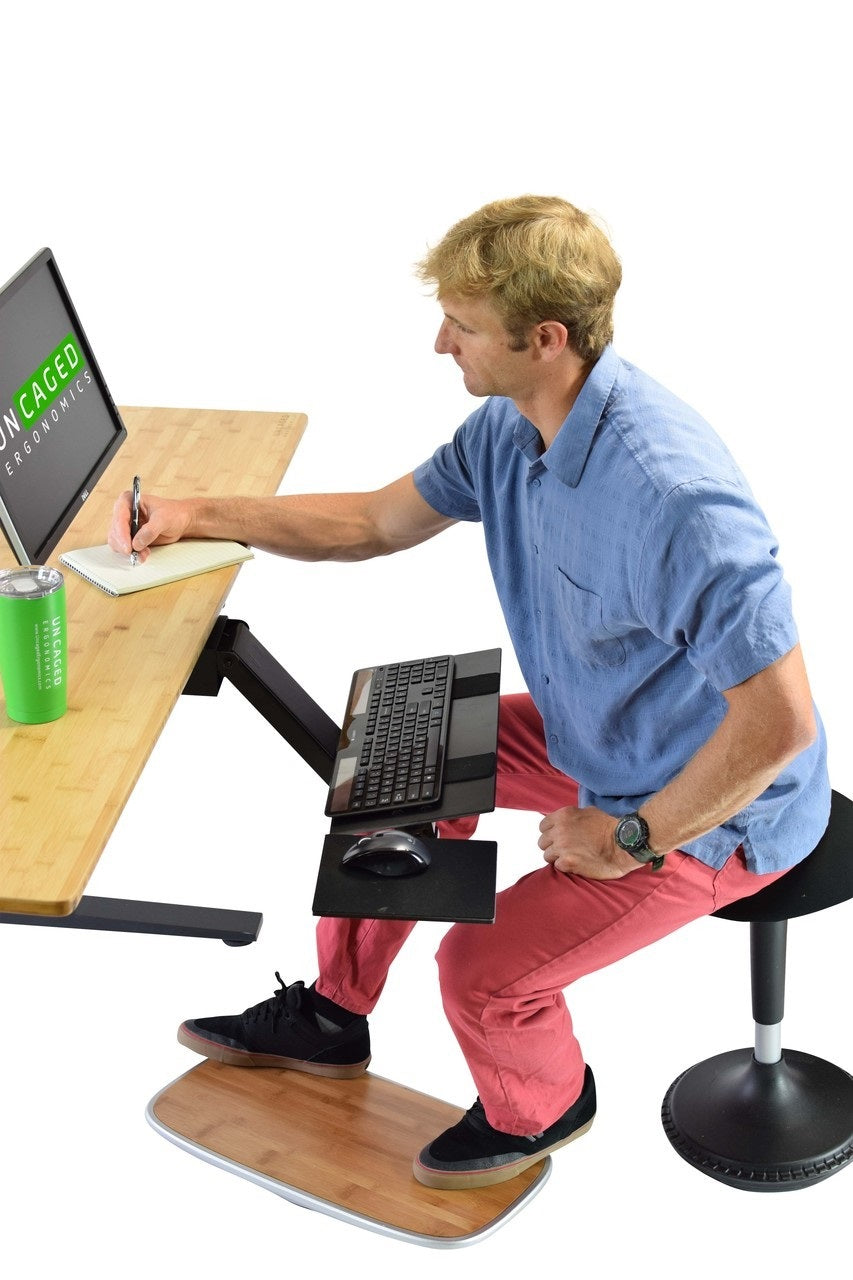
Ergonomics is the science and study of the relationship between a worker and the essential functions of their occupation. It focuses on how we interact with the environment when we are working, and our body position. Not employing ergonomic principles when working, pain and injury can result in lost work time, which can cost an individual and business a significant amount of money.
Investing in ergonomic solutions seeks large scale benefits that increase profit and enhance productivity. Office, service, medical, and manufacturing industries all have jobs with various ergonomic issues. In an office setting, ergonomics is creating a way to be comfortable using a computer and telephone and performing tasks like copying and faxing.
Follow these 10 office ergonomics tips to help you avoid fatigue:
- The weight of your arms should be supported at all times. If you do not do this your neck and shoulders will be stressed and possibly strained from supporting the weight all day.
- Try to keep the weight of your head directly above its base of support—your neck. Don’t stretch your head and neck forward. Don’t hold your head and neck in awkward positions when talking on the phone. This is a frequent cause of stress and strain. Use a headset instead.
-

When you slouch, that puts more pressure on the discs and vertebrae of your back. Instead employ the lumbar support of your chair. Don’t sit in a way that places body weight more on one than on the other.
- Keep your chair as close to your work as possible to avoid leaning and reaching. Do this each time you sit down. Your chair height should keep your elbows at desktop level and should support your lower back securely—use a lumbar pillow if needed. Set the tilt setting of your chair, if you have one, so you are comfortably supported. If there’s pressure on the back of your knees or legs or your feet don’t sit flat on the floor, use a footrest or lower your keyboard.
- Your monitor should always be directly in front of you, with the top no higher than eye level. Your monitor should be at least an arm’s length away, to avoid eye strain. The viewing area of your monitor should be slightly below eye level so make sure this is how your monitor is situated.
- Keep your monitor’s screen clean and adjust it for brightness. Don’t place your monitor in front of a window or a bright background. Do what you can to control screen glare. To help avoid eyestrain, blink a few times and look at objects at a distance to give your eyes a break. Do this periodically through the day.
- So that you don’t have to frequently turn your head and neck, your keyboard should be directly in front of the monitor. Keep your keyboard and the mouse close enough to prevent excessive reaching which strains the shoulders and arms.
- If there is pressure on the backs of your legs, or your feet don’t comfortably reach the floor, use a footrest or lower the keyboard and chair. Never let them dangle.
- Your wrists should be straight when they’re at desk level. Adjust armrests try to adjust them so they support your arms without being too high or too low, using small pads on armrests if those on the chair are inadequate. Use a wrist rest if you feel you need one.
- Keep your mouse right next to your keyboard so both elbows are by your sides while working. Avoid pressing your hands or forearms against any sharp edges on desk. Use your mouse pad or another soft surface to pad edge of desk.

